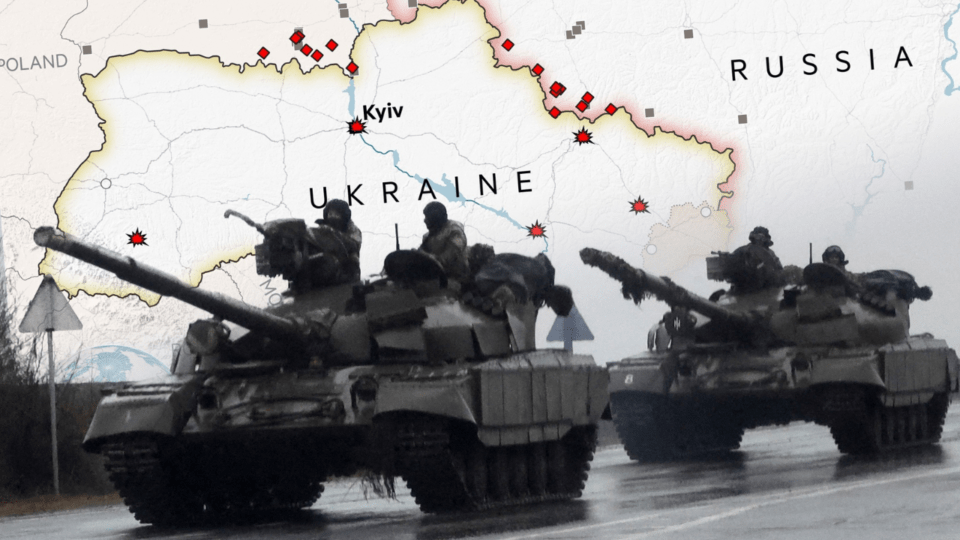It has been one year, six months, two weeks, and five days since the Russian invasion of Ukraine commenced. This protracted conflict has left a trail of destruction, affecting lives, economies, infrastructure, and societies on both sides. As the world grapples with this ongoing turmoil, the recent G20 summit in New Delhi highlighted the urgency of addressing the Russia-Ukraine war as a critical agenda item. In this comprehensive overview, we explore the multifaceted costs of this extended conflict.
Also Read: G20 is now 21
**Death and Destruction**
The ongoing war in Ukraine has resulted in a staggering level of death, reminiscent of the darkest days of World War Two in Europe. According to the United Nations High Commissioner for Human Rights (OHCHR), over 9,000 civilians were confirmed killed by the end of July, with more than 16,000 injured. However, it is widely believed that the actual numbers are significantly higher than these official figures.
The toll on military personnel has also been devastating, the New York Times reported that nearly 500,000 troops have either lost their lives or sustained injuries due to the conflict. This includes estimates from U.S. officials, who support Ukraine, suggesting that as many as 120,000 Russian troops have been killed, with 170,000 to 180,000 injured. Ukraine’s military has also suffered, with approximately 70,000 soldiers killed and 100,000 to 120,000 wounded.
Russian officials dispute these high estimates, labeling them as propaganda. Russian Defence Minister Sergei Shoigu claimed that only 5,937 Russian soldiers had been killed since the war’s outset, and further updates have been classified as a state secret. Ukraine, likewise, has not disclosed its military casualty figures, citing their impact on battlefield tactics as the reason for keeping them classified.
The ratio of casualties to deaths for Russia and Ukraine is 3:1 and 5:1, respectively. This grim statistic underscores the immense human cost endured by both nations.
**Mass Displacement and Humanitarian Crisis**
The war in Ukraine, which began in 2022, has forced millions of Ukrainians to flee their homes, according to the United Nations refugee agency. In a nation with a population exceeding 41 million, an estimated 17.6 million people are in dire need of humanitarian assistance. This includes over 5 million internally displaced persons uprooted by the conflict, as reported by the UNHCR. Moreover, there are more than 5.9 million Ukrainian refugees scattered across Europe, based on data from the agency.
The majority of these refugees are women and children, as Ukrainian men aged between 18 and 60 have been instructed to remain in the country and fight. This mass displacement has led to a burgeoning humanitarian crisis, with millions struggling to find shelter, food, and necessities.
**Ukraine: Territorial Losses and Economic Consequences**
Since the commencement of the war, Russia has taken control of 11% of Ukraine’s territory, equivalent to the combined area of Massachusetts, New Hampshire, and Connecticut. When factoring in Crimea, annexed by Russia in 2014, this brings Russia’s total control to approximately 17.5% of Ukraine’s landmass, comprising about 41,000 square miles (106,000 square km).
The consequences of the conflict in Ukraine have been severe. The nation has lost a significant portion of its coastline, its economy has been severely damaged, and certain cities have been reduced to wastelands due to the fighting. In 2022 alone, Ukraine’s economy contracted by a staggering 30%, and the International Monetary Fund forecasts growth of only 1% to 3% for the current year. The exact cost of Ukraine’s military operations remains undisclosed.
**Russia: Economic Challenges and Sanctions**
Russia’s expenditures related to the war are shrouded in secrecy, but they coincide with a substantial shock to the Russian economy, stemming from the harshest Western sanctions imposed following the invasion. While the economy did not experience the double-digit contraction initially anticipated in 2022, a return to prosperity remains distant as the government diverts more funds toward the military. According to the International Monetary Fund, Russia’s economy is expected to grow by 1.5% in the current year, following a 2.1% contraction in 2022.
The long-term outlook for the Russian economy is bleak, marked by the exodus of multinational corporations, a loss of human capital, disconnection from global financial markets, and diminished policy buffers. The IMF anticipates that, over the medium term, Russia’s output will be 7% lower than pre-war forecasts. Russia has doubled its 2023 defense spending target to over $100 billion, constituting a third of all public expenditure, as the costs of the war in Ukraine strain Moscow’s finances.
As Russia’s military spending soars and sanctions squeeze its energy revenues, Moscow faces challenges in managing its budget deficit. The country has lost a significant portion of the European gas market but continues to sell its oil globally, albeit with limitations imposed by the United States, Europe, and other powers. Russia has been excluded from Western financial markets, many of its oligarchs are under sanctions, and it is grappling with difficulties in sourcing critical
As an independent media platform, we do not take advertisements from governments and corporate houses. It is you, our readers, who have supported us on our journey to do honest and unbiased journalism. Please contribute, so that we can continue to do the same in future.

